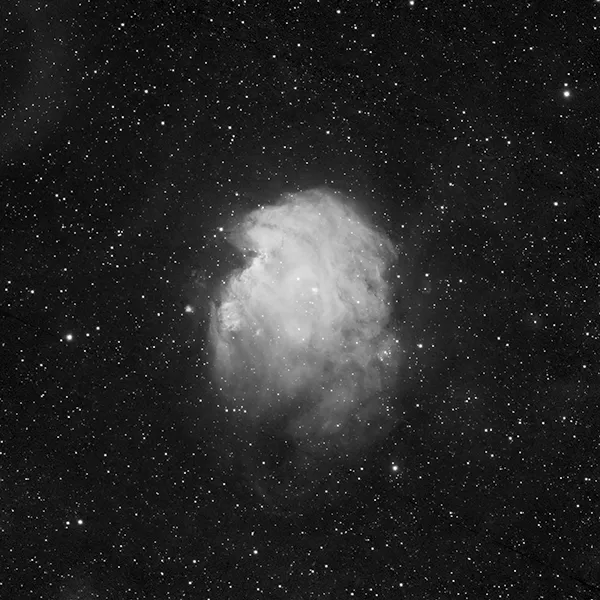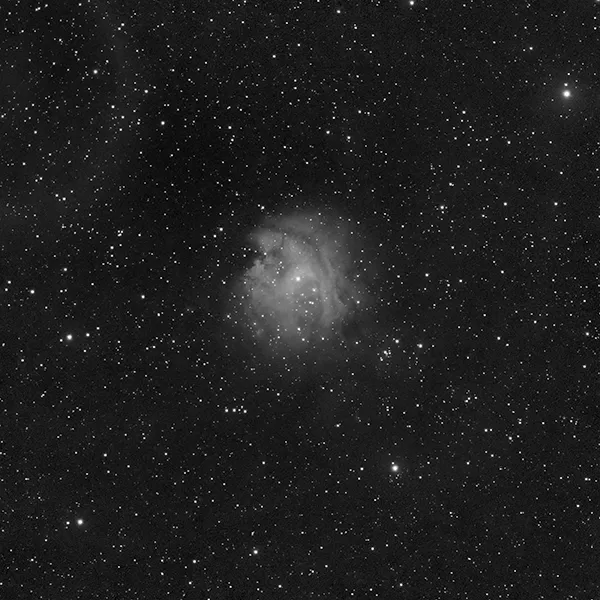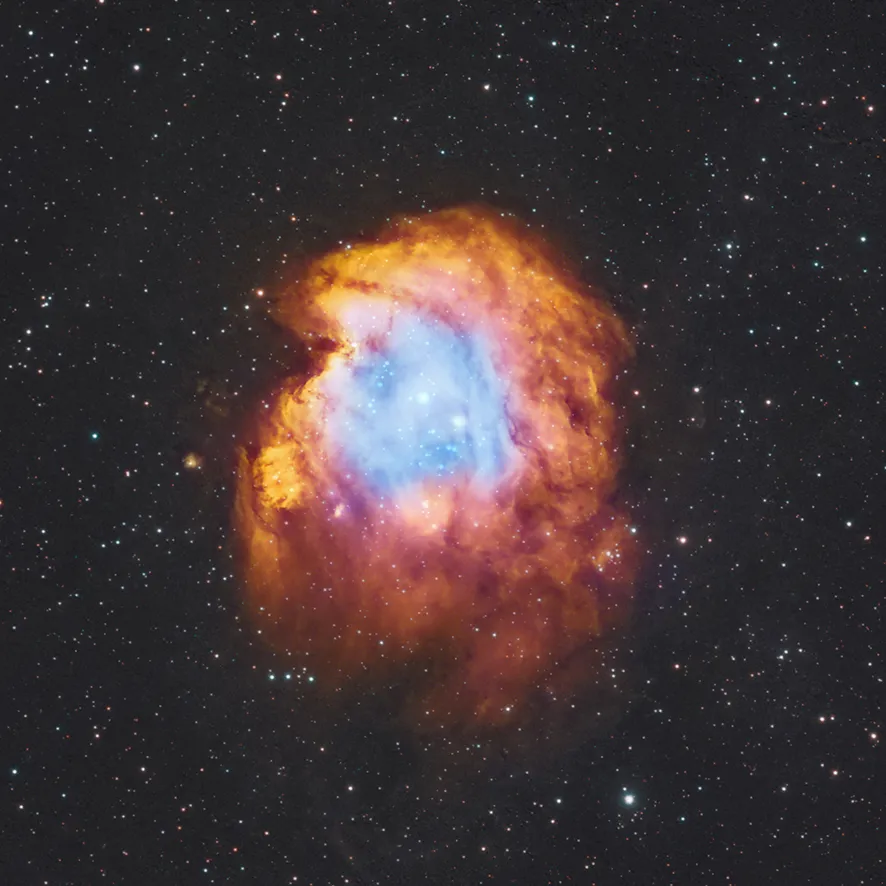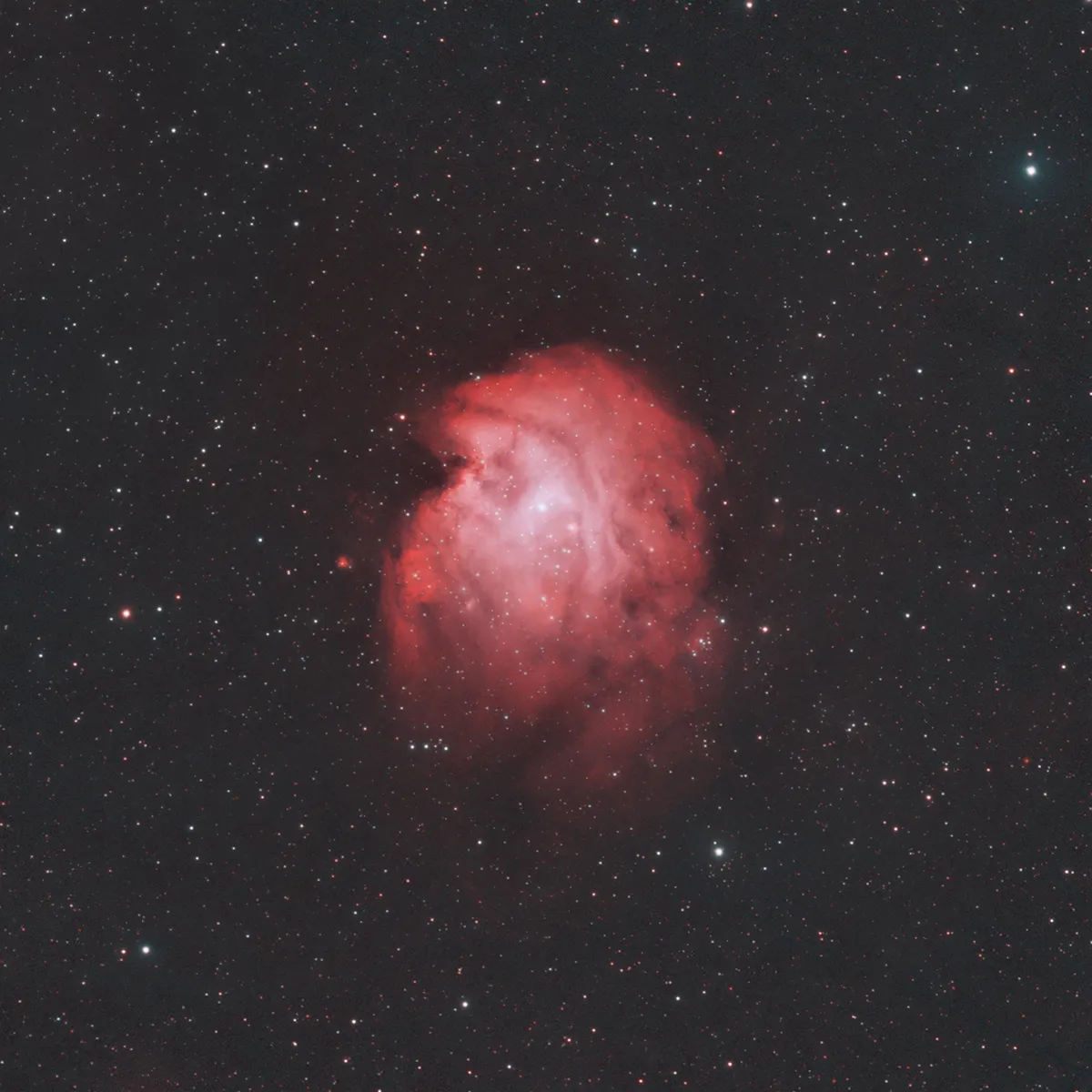The Monkey Head Nebula
The Monkey Head Nebula (NGC2174) is an emission nebula in Orion. It is known as the “Monkey Head Nebula” due to its shape although it’s a little hard to see the face. Can you see the monkey? NGC 2174 is a great target for medium to large telescopes and is fairly easy to capture from the city using a dual-band or narrowband filters.
Glowing gas and dark dust gets thrown around as the young stars near the center of the nebula generate stellar winds and high energy radiation. This creates the unique and complex shapes within the clouds. The nebula is primarily composed of hydrogen which glows near the infrared (red) wavelengths due to the radiation. The center part of the nebula does house some Oxygen-III (OIII) gas.
Specifications:
Designation: NGC2174
Known As: The Monkey Head Nebula
Apparent Size: 40′ x 30′
Magnitude (lower is brighter): 6.8
Distance from Earth: 6,500 LY
Two Hour Imaging Using a Bicolor Filter
The image above was taken in a Bortle 5 sky using the ZWO Duo-Band Filter. This only allows Ha and OIII light through to the sensor, giving rich red and teal colors. The teal gets washed out from traditional HOO processing due to the amount of Ha data, but in the “hubble-style” below, the OIII can really shine.
EQUIPMENT
Telescope: Apertura 60EDR
Mount: Skywatcher EQ6R-Pro
Camera: ZWO ASI533MC Pro
Guiding: ZWO ASI120MM Mini
Brain: ZWO ASIair Pro
Filters: ZWO Duo-Band Filter
ACQUISITION
Integration Time: 2 hours
RGB: 24 x 300sec
BIN: 1×1
Gain: 110
Temperature: -10° C
Bortle Scale: 5
CALIBRATION
Darks: 10
Flats: 20
Offset/Bias: 30


The Orion Constellation
Orion (the hunter) is one of the most recognizable constellations in the night sky. It is located near the celestial equator so it is visible to most of the world. Orion also contains two of the brightest stars in the sky, Rigel and Betelgeuse.
The Orion Nebula can be found between the belt and the feet of the constellation. Near the bright star, Rigel, you can also find a faint reflection nebula called the Witch Head Nebula (IC2118). You’ll also find the classic Orion Nebula, Monkey Head Nebula, Horsehead Nebula, M78, and M43 to name a few within Orion’s boundaries.

The Hubble Palette
You can be bring out the Oxygen gas emission even more by converting the color palette to the “Hubble-style”. This shifts the hydrogen’s red color to a gold and then keeping the Oxygen a teal color. If the image was captured with Sulfur emission too, that would be assigned a dark red hue.

Available Merchandise
Use the Order Form to request prints or merchandise. (I accept Venmo or CashApp.)
*General information regarding constellations, galaxies, nebulae, and planets have been sourced from: AstroBackyard, VisibleDark, Wikipedia, EarthSky, and NASA.

